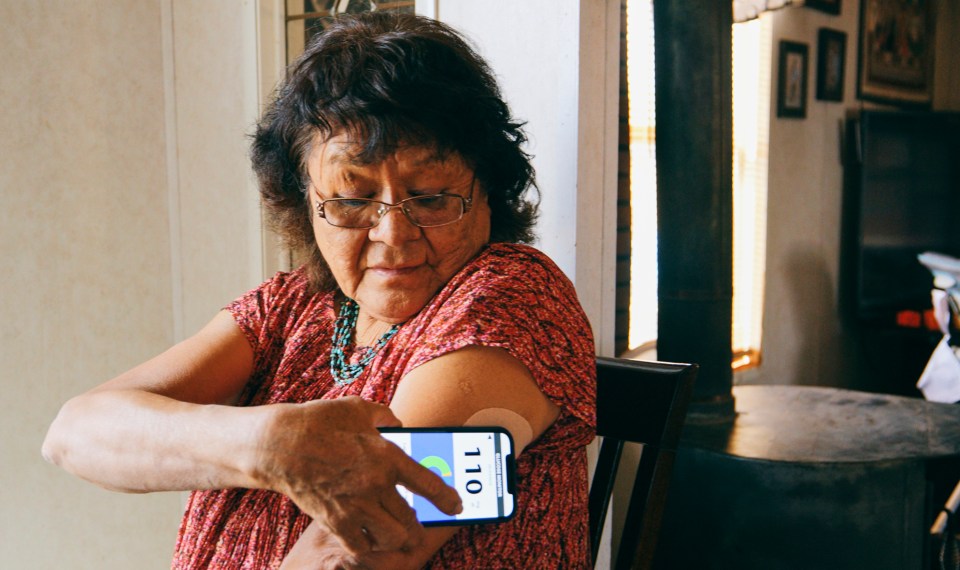Foot problems are a serious concern for those with diabetes. A small wound can turn into a big issue if not treated promptly and properly. A blister or cut can quickly progress to a severe infection requiring hospitalization or even amputation of your toe, foot or leg. That’s why proper diabetic foot care is an important part of managing diabetes.
Diabetic Foot Sores
Nerve damage (diabetic neuropathy) and poor circulation are two complications of diabetes that can lead to foot problems.
Diabetic neuropathy is nerve damage caused by high blood sugar. Nerve damage commonly starts in the feet and legs but may also progress to the hands and arms. Symptoms include pain and tingling, or loss of feeling in your feet. This means you may not feel a cut, blister or sore.
Diabetes also impacts circulation. Poor blood flow can lead to poor healing and difficulty fighting off infection. Individuals with diabetes are at a higher risk of developing gangrene, a serious condition caused by reduced blood flow that causes tissue to die. Gangrene raises the risk of infection that can spread into the bloodstream and throughout the body.
Diabetic Foot Care
Daily diabetic foot care is extremely important in preventing problems and keeping feet healthy. The following can help prevent infection and amputation due to diabetes:
- Carefully inspect your feet daily. Do a visual inspection of the top of your foot and carefully look at the bottom of the foot including the tips and bases of each toe, your heel, along the outside edge of your foot and across the ball of your foot. Use a mirror if necessary. Check for any blisters, wounds, bruises, redness, pressure spots, scratches or nail problems. Also look for swelling in one of your feet, which could be a sign of Charcot foot, a rare complication caused by nerve damage. If you notice any changes or anything suspicious, contact your doctor right away.
- Wash your feet every day using warm water and mild soap. Avoid hot water since loss of feeling in your feet could lead to burns. Dry feet thoroughly, especially between the toes. Pat your feet dry instead of rubbing and practice caution when drying between toes. If necessary, use a blow-dryer on the medium/warm setting or a toe sponge to dry between toes.
- Apply lotion after washing to prevent dry skin and cracks, but don’t use lotion between the toes.
- Do not use heating pads or antiseptic solutions on your feet.
- Do not attempt to remove corns or calluses on your own or with medicated pads or liquid removers. See your doctor for treatment of the lesions.
Diabetic Toenail Care
Caring for toenails is equally important as foot care, and should be a part of your diabetic foot care routine.
- Cut nails straight across since rounding them may lead to ingrown nails.
- Use an emery board to smooth nails.
- If your toenails are thick or difficult to trim, make an appointment with a podiatrist for trims. If you have Medicare, they will pay for a doctor to trim and inspect your feet every nine weeks.
Shoes and Socks for Diabetic Feet
The shoes and socks you wear matter, too. Consider the following when selecting footwear and socks:
- Do not go barefoot. Always wear shoes, even indoors.
- Wear clean socks with your shoes to prevent rubs and blisters. Seamless, lightly padded socks are recommended.
- Have your foot measured each time you buy shoes, and make sure to properly fit the width, length and heel. Shop for shoes late in the day when your feet are their biggest.
- Look for comfortable shoes with a firm sole.
- Avoid wearing new shoes for long periods. Wear them for only two to three hours a day at first. Check for redness or irritation after.
- If your feet swell, consider shoes with Velcro, laces or elastic.
- Skip pointy toed shoes and heels. Instead, opt for boxed toe styles made of leather.
- Rotate shoes. Don’t wear the same pair every day.
- Always feel inside of shoes before putting them on to ensure there is nothing inside that could injure your foot.
Tips to Promote Blood Flow in Feet
Since diabetes is commonly associated with poor circulation, there are things you can do to promote blood flow in your feet.
- Elevate your feet when sitting.
- Avoid tight socks or compression stockings.
- Wiggle your toes periodically.
- Don’t cross your legs for long periods.
The content of this site is for informational purposes only and should not be taken as professional medical advice. Always seek the advice of your physician or other qualified healthcare provider with any questions you may have regarding any medical conditions or treatments.



